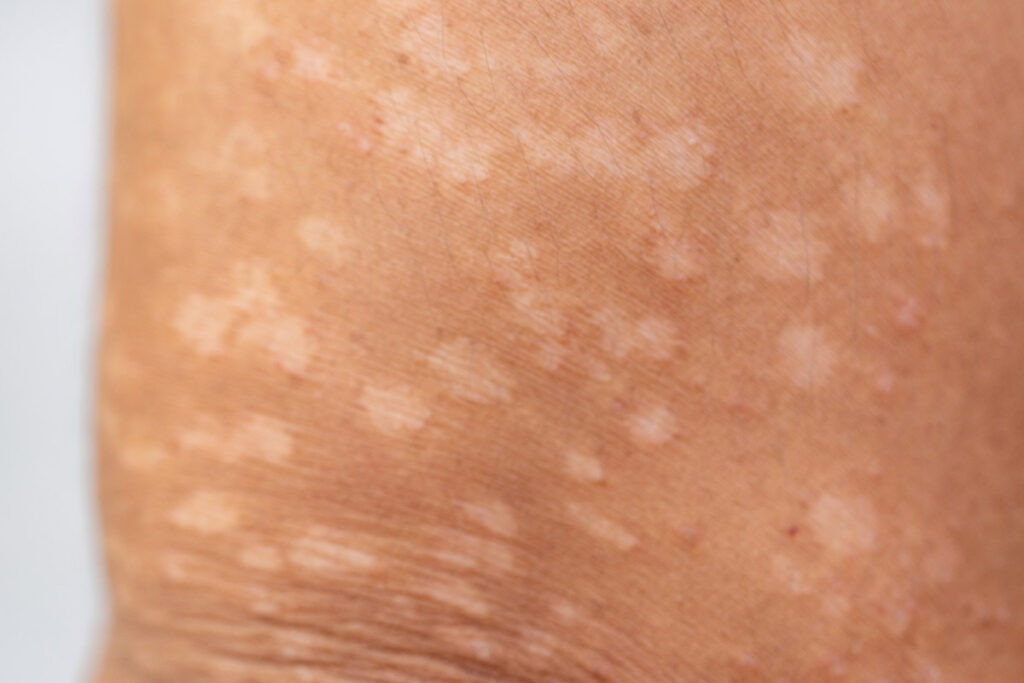To qualify for social security disability insurance (SSDI), you must meet certain criteria. For some illnesses and conditions, like lupus, there is a range of severity that makes qualifying for SSDI not as clear-cut.
The Social Security Administration (SSA) defines a disability as a condition that limits functional basic work-related activities, such as lifting, walking, standing, sitting, or remembering, for at least 12 months. If you are diagnosed with lupus, applying for disability can be confusing, as lupus can range from severe to mild in its symptoms.
Is Lupus a Disability?
Lupus disease is listed as a disability under the SSA blue book, qualifying an applicant for lupus SSD benefits if it meets specific requirements. The listing information reads as such:
14.02 Systemic lupus erythematosus
With:
A. Involvement of two or more organs/body systems, with:
1. One of the organs/body systems involved to at least a moderate level of severity; and
2. At least two of the constitutional symptoms or signs (severe fatigue, fever, malaise, or involuntary weight loss).
OR
B. Repeated manifestations of SLE, with at least two of the constitutional symptoms or signs (severe fatigue, fever, malaise, or involuntary weight loss) and one of the following at the marked level:
1. Limitation of activities of daily living.
2. Limitation in maintaining social functioning.
3. Limitation in completing tasks in a timely manner due to deficiencies in concentration, persistence, or pace
As with any Social Security listing, the disabling condition or disorder needs to have been present for 12 months and/or expected to result in death.
Admittedly, the criteria are vague and the marked restrictions in activities of daily living, maintaining social functioning and concentration, persistence, or pace are purposefully vague. These limitations are not items that will show up in a typical medical report. These are carried, instead, in the adult function report and your testimony in front of the administrative law judge assigned your claim.
Concerning listing 14.02(A), this can be difficult to establish in the medical records for long-term disability, and in many instances, a lupus diagnosis is insufficient to meet the listing level for lupus. The medical doctor needs to assign specific symptoms of lupus to diagnose:
Symptoms of Lupus
- Fatigue: Persistent and overwhelming tiredness.
- Joint Pain and Swelling: Often affecting the hands, wrists, and knees.
- Skin Rashes: Especially the "butterfly rash" across the cheeks and nose.
- Fever: Low-grade fevers that are recurrent or persistent.
- Hair Loss: Thinning hair or hair falling out in patches.
- Photosensitivity: Increased sensitivity to sunlight, leading to rashes or other symptoms.
- Mouth and Nose Ulcers: Painful sores inside the mouth or nose.
- Raynaud's Phenomenon: Fingers and toes turning white or blue in response to cold or stress.
- Chest Pain: Often due to inflammation of the lining around the lungs or heart.
- Kidney Problems: Such as swelling in the legs or around the eyes, and foamy urine.
- Neurological Symptoms: Including headaches, dizziness, seizures, and cognitive difficulties.
- Age: Research shows most people develop lupus at the age of 15 to 45.
Lupus Disability Criteria
Many people with lupus can and do continue to work, though some may require workplace adjustments, such as changing their hours or working from home. They may also modify their workstations to relieve physical stress, find support resources, schedule rest periods, or avoid physically demanding work tasks.
To get lupus disability benefits, an applicant must meet all the following in the list:
- Having held jobs covered by Social Security
- Having a medical condition that meets the SSA's definition of disability
- Unable to work or engage in substantial gainful activity (SGA)
- Unable to perform previous work or adjust to other work
- The condition will last for at least one year or result in death
With lupus, the symptoms must translate to you meeting these standards. While lupus is a medical condition that meets Social Security’s definition of disability and is expected to last for life, if the symptoms don’t meet the medical disability requirements, then your application will be denied.
How Marken Law Helps Get Your Social Security Disability Insurance with Lupus
A denied application is not an end-all to things. As an advocate for people with disability, we help you navigate legal battles so that your claims and applications go through the approval process. We provide specific RFC questionnaires we give your medical doctors to help you obtain disability benefits and ask designed questions to obtain helpful answers from your doctor, such as:
- Does your patient fulfill the diagnstic criteria for systemic lupus erythematosus (SLE) as identified by the American College of Rheumatology? (namely exhibiting, at any time, at least four of the first eleven signs or symptoms)

